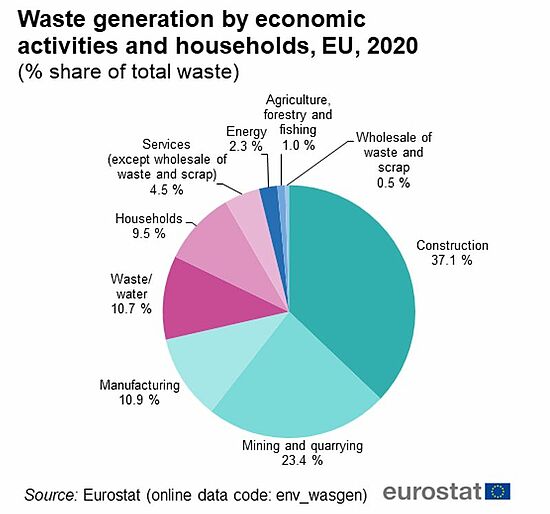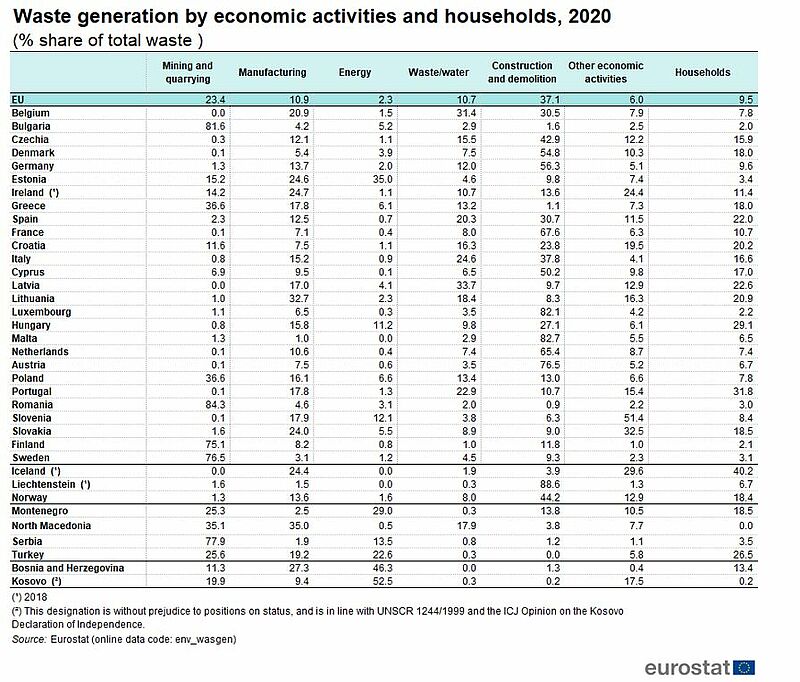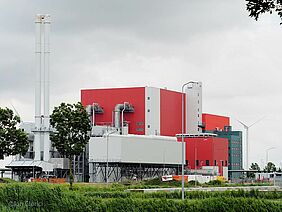Waste generation and treatment statistics in the European Union in 2020 presented by Eurostat reveals that EU‘s all economic activities and households in the EU Member States generated 2 151 million tonnes waste which corresponds 4 808 kg per capita.
Of all different activities, the largest waste producer is Construction, contributing 37.1% of total waste in 2020, ahead of Mining and quarrying (23.4%), Manufacturing (10.9%), Waste and water services (10.7%) and Households (9.5%); the remaining waste was predominantly generated from Services (4.5%) and Energy (2.3%).
Almost two-thirds (64% or 3.1 tonnes per inhabitant) of the total waste generated in the EU in 2020 is classified as major mineral waste, which is mainly waste generated from mining and quarrying as well as construction and demolition.
The presented statistics distinguish major mineral waste from all other waste as can be seen from the figure below. Excluding major mineral waste, the highest levels of waste generation in 2020 were in waste and water services (211 million tons), households (196 million tons) and manufacturing (171 million tons).
On the country level, particularly high levels of total waste generated per capita were recorded in Finland, Bulgaria and Sweden. These three countries are at the same time leaders by the share of total waste coming from Mining and quarrying, while elsewhere Construction and demolition often contributed to the high shares as can be seen from the table below. In Finland more than 20 tonnes of waste per inhabitant were recorded in 2020, more than four times the EU average. Hungary, Portugal, Latvia and Croatia are the EU member states that produce the least amount of waste.
According to Eurostat, between 2004 and 2020, waste generation by households increased by 12.5 % in the EU. High levels of household waste were recorded in Portugal (31.8% of total waste), Hungary (29.1%), Latvia (22.6%) and Spain (22%). In contrast, Bulgaria (2%), Finland (2.1%) and Luxembourg (2.2%) produced the smallest amount of household waste.
In 2020, about 2 029 million tonnes of waste were treated in the EU. Approximately 39% of waste was recycled and 31% landfilled. Backfilling accounts for about 14.6 % and energy recovery for 6.4 %. There is considerable variation among EU member states in how they use these different treatment methods. For example, some EU member states have very high recycling rates (Italy, Belgium, Slovakia and Latvia), while in others the predominant category of treatment is landfill (Romania, Bulgaria, Finland, and Sweden.
